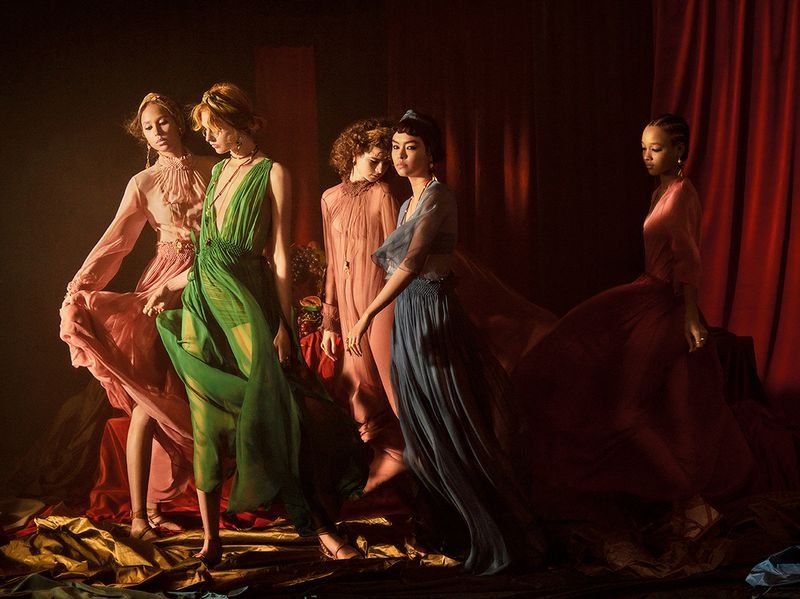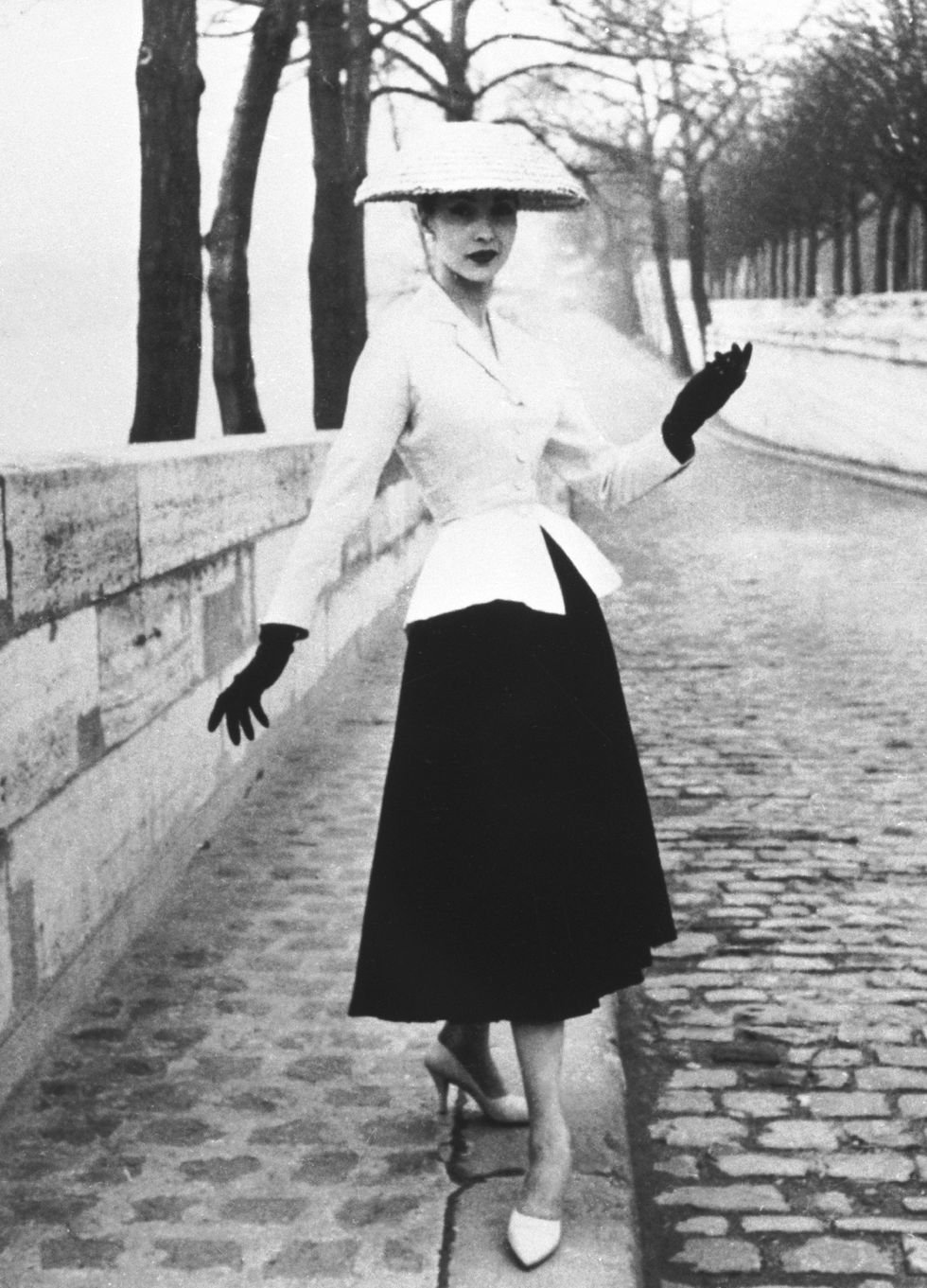Designer Deep Dive: Dior
It’s the first Friday of February (hold on - can we just take a moment to acknowledge that it’s somehow already February? 2022 is flying by!) which can only mean one thing…it’s time for another installment of my Designer Deep Dive series! I’ve been having so much fun putting these posts together and I hope you’ve been enjoying reading them. In case you missed my previous installments, here are the links to the Gucci and Chloé posts I wrote. Today I’m incredibly excited to dive into the feminine and sophisticated world of Dior. Dior has been popping up more and more in my Instagram feed recently, with celebrities and influencers alike sporting the house’s '“It” bags like the Saddle and Lady Dior. These are both such iconic, classic styles and seeing them being worn on repeat has piqued my interest to learn more about Dior. In typical fashion (no pun intended), let’s start at the beginning.
Christian Dior was born in 1905 in Granville, a seaside town in northern France. Several years later, his parents moved him and his 4 siblings to Paris. Christian expressed an interest in art from a young age and aspired to become an architect, however, he gave into pressure from his father, who was the owner of a successful fertilizer manufacturer, and attended school to study political science at the age of 20. Upon graduating a few years later in 1928, he opened a small art gallery with the money that his father loaned him, on the one condition that he would not put their family name on the building. Christian showcased artwork from significant artists, such as Pablo Picasso, but he was forced to close the gallery in 1931 due to the unfortunate death of his brother and mother, and their family’s financial collapse.
Following the closure of his gallery, Christian decided to sell his fashion sketches in order to provide for his family, which led him to get a job doing illustrations for a magazine. A few years later he was hired as a design assistant by a couture Paris designer named Robert Piguet, but it was a short-lived step in his career; just one year later Christian served as an officer in the French army during World War II. Following France’s surrender to Germany in 1940, Christian returned to Paris to work for couturier Lucien Lelong alongside Pierre Balmain, who would also one day start his own fashion line (perhaps he could be the subject for my next Designer Deep Dive?!). While Christian honed his skills working for these designers, deep down he wanted to spread his wings and start his own line, and in 1946, the House of Dior was born!
He debuted his first fashion show in 1947 and had everyone buzzing about his collection that he called the “New Look” which featured dresses that were a sharp contrast to the padded shoulders and short skirts that were popular in Paris post World War II. This New Look showcased dresses that are what we now call an A-line silhouette: nipped in at the waist and full, billowy skirts that were mid-calf length to really accentuate an hourglass figure. The designs in his first collection were incredibly extravagant, using 20 yards of fabric each! His designs were quite revolutionary for the time period and thus he was put on the fashion map as a designer that female celebrities and actresses adored. His New Look was so sought after that he was invited by the British royal family to stage a private showing of the collection!
Christian Dior opened his first US store in New York City on Fifth Avenue in 1948, just two years after the birth of the fashion house and one year after his debut collection. If that doesn’t illustrate how sought after and popular his garments were I don’t know what does! The global launch of his brand also meant expanding into new categories, the first being fragrance. Miss Dior, the scent that so many know and still love today, was dedicated to his sister. Around this same time, Christian came to the realization that in order for women to dress in his New Look from head to toe, he needed to continue expanding into other merchandise categories. In 1949, Christian and his business partner, Jacques Rouet decided to license the Dior brand for accessories such as shoes, hats, and any other items necessary to capture the full essence of the New Look. Licensing was a big step for the fashion house as it allowed the Dior name to spread like wildfire and it was extremely profitable for the company, but it was frowned upon by the French Chamber of Couture as they felt it cheapened the image of the couture industry. It wasn’t long after though that other designers followed in Dior’s footsteps after they saw how successful his licensing venture became.
In 1955, a new design assistant joined the House of Dior and his name was Yves Saint Laurent. Christian saw a lot of potential in him and even told his mother that he wanted him to take over Dior when he passed away. Sadly, Christian Dior suddenly passed away from a heart attack just two years later at a mere 52 years old. His loss was felt deeply amongst the fashion industry and those who knew him, recognizing that he had gone much too soon. Staying true to his word, Yves Saint Laurent, at the young age of 21, stepped into his new role as creative director of the fashion house following Christian Dior’s death. He maintained the chic and sophisticated reputation that Dior was known for, but he wanted to introduce a softer quality to his designs, letting out the cinched waistlines a bit. His collections didn’t consistently win over the public who was still grappling with someone other than Christian Dior running the show, and when Yves Saint Laurent was called upon to serve in the French army in 1960, he was released from his role at Dior.
Marc Bohan took over following Saint Laurent’s departure and brought with him more of the classic designs that Christian Dior was producing right before his death. He created a more modern silhouette for Dior’s New Look as they entered a new decade while staying true to the brands feminine roots. Marc remained the creative director of the house for over a decade, creating garments that felt very true to the principles and brand that Christian had created 20 years prior. Under his leadership, Dior opened more stores internationally in places like Hong Kong and London, and even ventured into more product categories such as baby clothing and ready-to-wear. Dior’s popularity soared once again with Marc at the helm and was recognized as one of the most sought-after designers in the fashion world. However, it wouldn’t be long before some big changes ensued for the house.
In 1978, the Boussac Group, who had financially backed Dior from the beginning, filed for bankruptcy. This allowed the billionaire behind the LVMH Moët Hennessy group, Bernard Arnault, to swoop in and purchase the brand. Despite all of the changes happening within the house, Dior still remained an influential force within the industry. In 1989, Gianfranco Ferre was appointed as creative director and was already respected as a designer running his own brand in Italy. During his reign at the fashion house, he ventured into the world of haute couture and debuted 15 couture collections! This was something that the house had not seen before as they had only designed ready-to-wear collections up until that point. Gianfranco refined Dior even more and gave an architectural flair to his designs.
After Gianfranco’s departure from the house in 1996, John Galliano stepped in and took over as creative director after his 1-year stint at Givenchy. John truly catapulted Dior into the new millennium thanks to his creation of the Saddle bag, which is still one of Dior’s most iconic handbag silhouettes today. He also gave a name to another Dior handbag that was born in 1995 and was first seen on the arm of none other than Princess Diana. With her blessing, this bag was appropriately named “Lady Dior” and has been a classic and staple of the house ever since. You could say that this was Princess Diana’s go-to bag considering she was photographed carrying it pretty much everywhere, which also helped to further spread awareness of the brand and their handbags.
Galliano remained at Dior for 15 years but was asked to exit the brand in March 2011 following the release of an article posted by a British tabloid which showed a video of Galliano making anti-Semitic remarks to Italian tourists in a Paris bar. After that abrupt departure, Raf Simmons took his place and brought forth designs that were more reminiscent of Dior’s early beginnings: feminine and understated. Just 5 years later in 2016, Maria Grazia Chiuri was appointed as creative director, the first woman to hold that position in the fashion house’s history! It made headlines within the industry and was a pivotal moment for this legendary brand. It wasn’t until Maria’s direction that the brand truly came full circle and embraced its feminine roots. She remains at the house today and continues to create elegant and modern designs that embody the legacy Christian Dior began almost 80 years ago. If you want to get caught up on the latest from Dior, I highly recommend watching the recent Spring-Summer 2022 Haute Couture fashion show - it was divine!! Dior also just launched their newest bag, the Dior Vibe, and I’m so curious to hear your thoughts! I love that it has the dual functionality of a satchel and a crossbody, and the leather quilting is very reminiscent of the Lady Dior bag - has a classic vibe (no pun intended, again) to it.
Like I mentioned in the beginning of my post, I’ve continued to see this designer take over my social media feeds, which naturally has caused me to pop onto the Dior website and peruse their latest collections. The bralette trend has really taken over for Spring ‘22 and I’m obsessed with this one that features the Dior Oblique motif is just exquisite! I’m also so smitten with the Saddle bag, especially in this matte neutral hue that has some blush undertones.
As I’ve continued to research different designers over the past few months, it’s been so interesting to see the overlap in their histories and how so many well-known names have crossed paths with one another. Like Stella McCartney designing for Chloé before starting her own line, and same with Yves Saint Laurent designing for Dior before starting his own line. Or how Christian Dior crossed paths with Pierre Balmain while they worked for Lucian Lelong. The fashion world seems incredibly big and yet so small at the same time :)
Sources: CR Fashion Book | Biography.com | InStyle | Purse Blog |






